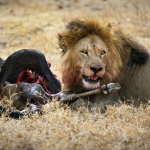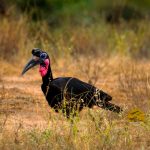Unveiling the Mystery of Duikers in Uganda: A Journey into the Lives of Elusive Forest Antelopes.
Duikers in Uganda. With its abundance of wildlife, Uganda is ideal for those who love the thrill of viewing rare and often overlooked species. The most interesting types of animals are duikers: small and elusive antelopes native to thick forests of the country. Small in size, they easily become overshadowed by major and more popular animals, including lions, elephants, and gorillas. Nevertheless, they play a very significant role in the Ugandan ecosystem and can be quite an exciting discovery on treks.
What are Duikers?
Duikers are small to medium-sized antelopes and are usually recognized by their evasive and solitary nature. The name is derived from the Afrikaans word “duiker,” meaning “diver,” regarding how nimbly they dive into thick underbrush at their slightest alarm. A number of Uganda’s different species of duikers prefer various habitats in the country.
The most common species in Uganda include the Bush Duiker, the Blue Duiker, and the Black-Fronted Duiker. Each of the species possesses its peculiar features and amazing behaviors, which make them a unique highlight of any forest adventure taken in Uganda.
Species of Duiker in Uganda.
1. Bush Duiker (Sylvicapra grimmia)
Bush Duiker or commonly known as the Common Duiker, is the larger one and widely distributed over Uganda’s savannah and woodland. Being highly adaptable to various habitats, this species is not only found in forested areas but also in grasslands and agricultural areas, therefore, more commonly encountered than other duiker species.
Food sources of Bush Duiker range between grasses and leaves to fruits, and even scavenge for small vertebrates-an unusual attribute in an antelope. Because they are extremely shy, they have to most of the time depend on camouflage and speed in order to escape from their presumed threat.
2. Blue Duiker (Philantomba monticola)
It is one of the smallest antelope species in Uganda, standing only about 35 cm high at the shoulder, weighing about 5 kg. True to its name, the coat of the Blue Duiker has a subtle bluish-grey sheen that helps it disappear into the forest floor. These tiny antelopes are found in western Uganda’s tropical rainforests, especially in places like Kibale Forest National Park and Bwindi Impenetrable National Park.
The Blue Duiker is speedy and can even do rapid shifts to run under the undergrowth as a way of evading potential predators. Its diets involve fallen fruits and leaves, small insects, hence being one of the key elements in the seed dispersal process in their ecosystem.
3. Black-Fronted Duiker (Cephalophus nigrifrons)
The Black-Fronted Duiker is so named because of the distinct black patch on its forehead and is a more reclusive species found in western Uganda’s dense forests, especially in the Rwenzori Mountains and Semuliki National Park. Slightly larger in size compared to the Blue Duiker, these antelopes are more solitary and thus even harder to spot, keeping to the thickest parts of the forest.
Its reddish-brown coat allows it to camouflage itself in thick vegetation. They are mainly frugivorous, mostly glimpsed following the primates like monkeys and chimpanzees to feed on the fruit that falls from above.
Habitat and Behavior.
Duikers occur in dense Uganda forests, where they will always move unnoticed in the underbrush. Unlike the bigger-sized antelopes, which occur in herds, duikers are largely solitary or in pairs, usually a mated pair that will remain together for life. This timorous and secretive nature has been one of their defining traits and has made them difficult to observe in the wild.
Because of their small sizes, they can easily navigate through dense vegetation, hence these keen senses of hearing and smell in detecting leopards, eagles, and human beings. Most of their diurnal activities are crepuscular, where they repute to avoid the hot hours of the day, as well as avoid more active nocturnal predators.
Importance of Duikers in Uganda Ecosystem.
The duiker is among the important means in conserving the balance of the forest ecosystem in Uganda. Duikers eat a wide variety of plants, fallen fruits, seeds, and even small invertebrates; this enables them to assist in seed dispersal across the floor of the forest. They do help in forest regeneration and biodiversity. Interacting with other species, primates dropping fruits from the canopy, will elaborate relationships among the species themselves within the food web.
Being prey to large predators such as leopards, eagles, and pythons, duikers play an important role in sustaining such carnivores in Uganda’s national parks and reserves.
Where to See Duikers in Uganda.
It is not easy to see a duiker, as they are rather shy and solitary animals; however, there are several key areas in Uganda that have the best opportunities to see these animals:
Bwindi Impenetrable National Park: Though this dense, mountainous rainforest has grown in fame with great popularity as a place for gorilla trekking, it also calls home to the blue and yellow-backed duikers. Being timid, you’d need lots of patience to catch one; on the other hand, the rich biodiversity of this UNESCO World Heritage Site is worth the wait.
Kibale Forest National Park: Although most famous for its populations of chimpanzee, Kibale is also home to a range of duiker species. Visitors may get a glimpse of blue duikers darting through the undergrowth as one treks through its forests.
Queen Elizabeth National Park: This park encompasses several topographies-from savannahs to woodlands that are suitable for bush duikers. You will see these tiny antelopes while on game drives or even nature walks when they come out to feed on leaves or retire into the underbrush.
Murchison Falls National Park: Though best known for its powerful waterfall and large mammal species, visitors can often catch views of the bush duiker along forested edges of the savannah plains, especially during early morning or late evening drives.
Challenges to Duiker Conservation.
In Uganda, as with many other wildlife species, duikers also face a number of threats. Loss of habitat due to deforestation and agricultural expansion by humans puts them in jeopardy of survival, especially for those forest-dwelling species of blue and yellow-backed duikers. Poaching is also a danger to their lives since they are hunted for meat.
With much conservation effort instigated by the Uganda Wildlife Authority and several non-governmental organizations, hope lingers for these species. The establishment of protected areas in the form of national parks and reserves ensures a conducive environment with a marked level of safety for duikers to thrive in. Eco-tourism also plays a vital role in increasing awareness toward preserving Uganda’s wildlife.
Remarks on Duikers in Uganda.
Though not as famous as the mountain gorillas or lions, duikers are an important part of this country’s rich tapestry of wildlife. The fact that these mammals are elusive makes them a great catch for any lover of wildlife who will be lucky enough to catch a glimpse of them in Uganda’s national parks. These timid antelopes remain interesting to visitors owing to their quick ways, prettiness, and adaptability in the wild.
To whoever is going to make this journey to Uganda, don’t miss a glimpse of movement in the flash across the forest-a darting duiker-very special and rare wildlife encounter.












